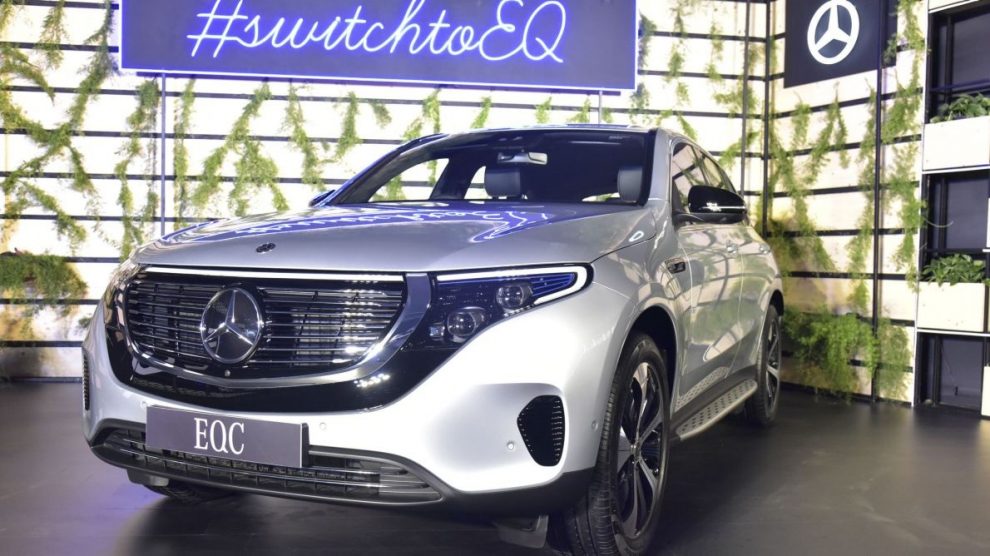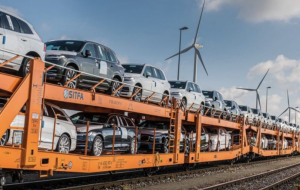After more than a decade of sitting on the fringes, electric cars are finally starting to get momentum in India. Over the past year, the country witnessed the release of four EV models taking the tally to six.
And last week saw the launch of Mercedes Benz’s $140,000 EQC, India’s first luxury electric SUV.
On Thursday, as Jaguar Land Rover launched its luxury EV iPace, which precedes a dozen more luxury EV launches in the next six months, according to industry sources.
Suddenly a silent revolution of EVs is seemingly sweeping India, despite the challenges confronting electrification of automobiles.
“The launch of the luxury EVs signals that India is finally moving toward sustainability in the EV space that could boost the passenger car segment in the electrified automobile space,” a spokesperson for Mahindra Electric Mobility told AF.
MEM is part of the $19 billion Mahindra Group, which claims to be the pioneer of electric vehicle technology in the country.
“While India is still focused on the shared mobility segment-vehicles priced under $20,000, the launch of luxury EVs is crucial for popularising electric cars in the personal vehicle space. EVs, now need to be marketed to consumers in a manner to convey that such cars can not only address their environmental concerns. But also cater to the aspirational needs,” he added.
Dawn of electric vehicles
According to the Society of Manufacturers of Electric Vehicles (SMEV), EVs – including battery, hybrid and plug-in hybrid and fuel-cell electric vehicles – are already becoming more commonplace in the country’s transportation sector than they were even three years back.
The adoption was partly boosted by various government policies and incentive schemes launched in recent years by agencies such as the Ministry of Renewable Energy and Department of Heavy Industry.
But more important has been the Modi government’s keenness to promote clean mobility not only for environmental and health reasons but also to reduce the country’s huge oil import bill.
That led to a slew of policy measures.
In 2013, for instance, the government introduced the National Electric Mobility Mission Plan (NEMMP) 2020 – a national mission document that provided the vision and the roadmap for the faster adoption of electric vehicles and manufacturing in the country.
Then, the Department of Heavy Industry formulated another scheme called Faster Adoption and Manufacturing of Hybrid & Electric Vehicles (FAME) to promote manufacturing of electric and hybrid vehicle technology and to ensure its sustainable growth.
The first phase of FAME was launched in April 2015 for two years and was subsequently extended until March 2019. It provided demand incentives for electric and hybrid vehicles across segments in the form of an upfront reduction of purchase price.
Subsequently, India crafted the second phase (called FAME II) with an outlay of $1.4 billion for three years commencing from April 2019 to boost the usage of EV for public transport.
This second phase focused on commercial vehicles and its incentives were designed to encourage the adoption of three- and four-wheeler EVs and also for buses.
And in August the Ministry of Road Transport and Highways allowed all the states and Union Territories to exempt electric vehicles from registration fees.
That, according to the industry, was a major incentive for EVs too.
“Clearly, with these incentives, and the plethora of others provided by India and each of the country’s states, EVs are likely to replace internal combustion engine vehicles sooner than later; much sooner in fact,” Sohinder Gill, the director general of SMEV, told AF.
Market taking shape
A Frost and Sullivan survey released in April, projected that e-rickshaws, e-autos and e-two-wheelers will proliferate in numbers and account for 4 million units by 2025.
The range of incentives proposed by FAME II could also generate gradual demand for electric mobility by supporting 7000 e-buses, half a million e-three-wheelers and a million e-two-wheelers.
While the industry visualises that the adoption of EVs as shared transport are slated to leapfrog, there is no telling how the market for EVs in the personal vehicles space would evolve, says SMEV.
“But the slew of luxury EV launches slated ahead is a signal that EVs in the personal mobility space have managed to grab the country’s attention, and that the market is finally taking shape,” said an industry source, who requested anonymity as he is not a spokesperson.
“As more and more companies start launching personal transportation EVs across the price range, widespread electrification of cars is but inevitable,” he added.
• Indrajit Basu
This report was updated on Jan 13, 2022 for style purposes.
READ MORE:
Who Killed the Gasoline Car? The Future of Electric Cars
Uber promises 100% electric vehicles by 2040
























